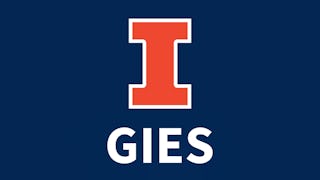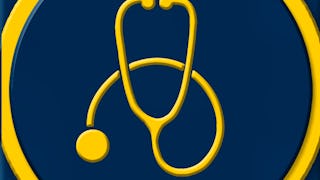idea 2 IMPACT (i2I) is an online, 6-week course that will guide you step by step through the experience of developing an innovative and entrepreneurial idea in the area of assistive technology (AT). Each week, you will focus on a stage of the translational process as you work in teams to identify a problem, analyze stakeholders, define a solution, describe its benefits, research the competition, articulate differentiators, and create an action plan.

Gain next-level skills with Coursera Plus for $199 (regularly $399). Save now.

idea 2 IMPACT: An Introduction to Translating Assistive Health Technologies and Other Products

Instructor: Mary Goldberg
Included with
Skills you'll gain
Details to know

Add to your LinkedIn profile
3 quizzes
See how employees at top companies are mastering in-demand skills

There are 7 modules in this course
Welcome to Idea 2 IMPACT: Translating Assistive Health Technologies and Other Products, where you'll learn how to translate scientific research to innovations that benefit humankind. idea 2 IMPACT (i2I) is an online, 6-week course that will guide you step by step through the experience of developing an innovative and entrepreneurial idea in assistive technology (AT), biomedical technology, and other types of technologies. The course is for academic research scientists, early-stage entrepreneurs, clinicians, and practitioner-researchers (rehabilitation engineers, OTs, PTs, MDs, PhDs, fellows, medical or other graduate-level students, undergraduates, faculty, and post-docs) who are new to entrepreneurship, and interested in translating research into practical applications to get their product or ideas to the intended audience. Each week, you will focus on a stage of the translational process to identify a problem, analyze stakeholders, define a solution, describe its benefits, research the competition, articulate differentiators and create an action plan.
What's included
5 videos4 readings1 quiz1 discussion prompt
What is the problem you're solving? Who does it affect, and how do they view it? Are you sure the problem needs to be solved? How do you know? These are some of the questions we'll be asking in this module. In addition, who is impacted by the problem you've identified and the solution you'd like to propose? How do different stakeholders experience the problem differently? Have you identified all of the relevant stakeholders?
What's included
8 videos3 readings
What solution are you proposing to address the problem you've identified? Is it a medical device? a drug? an app? Why is it important to be very precise in identifying what your solution is, how it works, and how it solves the problem? Find out in this module.
What's included
8 videos2 readings1 quiz
You've identified a problem. You've identified stakeholders. You've outlined a solution and articulated its benefits. Now it's time to dig more deeply into who (or what) is offering a competing solution. Do you know who your competition is? Are you sure? Find out how to identify and analyze competitors in this module.
What's included
4 videos1 reading
What sets your solution apart? What makes it different? In this module, you'll learn to think beyond features and functionality to explore all aspects of potential differentiation.
What's included
4 videos1 reading
The marketing and sale within the United States of the healthcare product you are developing will require complying with various regulatory bodies including the U.S. Food and Drug Administration (FDA) and other industrial standards. A regulatory strategy describes the approach that will be used to meet these standards. This strategy also includes understanding and designing for requirements that third-party payors or insurers may have. Determining who will pay for the product, whether it can be reimbursed by public or private payers, or if it must be paid for out-of-pocket is important for reducing risk in your commercialization plan.
What's included
1 video2 readings
Now it's time to put it all together into a final presentation pitch: problem, stakeholders, solution, benefits, competition, and differentiation. How can you make it compelling? Also, what milestones will you need to reach to take your project forward? In this module, we'll review some of the next steps as you plan your final presentation.
What's included
6 videos2 readings1 quiz1 discussion prompt
Instructor

Offered by
Explore more from Research
 Status: Free Trial
Status: Free TrialUniversity of Illinois Urbana-Champaign
 Status: Free Trial
Status: Free TrialArizona State University
 Status: Free Trial
Status: Free TrialUniversity of Michigan
 Status: Free Trial
Status: Free TrialArizona State University
Why people choose Coursera for their career




Frequently asked questions
To access the course materials, assignments and to earn a Certificate, you will need to purchase the Certificate experience when you enroll in a course. You can try a Free Trial instead, or apply for Financial Aid. The course may offer 'Full Course, No Certificate' instead. This option lets you see all course materials, submit required assessments, and get a final grade. This also means that you will not be able to purchase a Certificate experience.
When you purchase a Certificate you get access to all course materials, including graded assignments. Upon completing the course, your electronic Certificate will be added to your Accomplishments page - from there, you can print your Certificate or add it to your LinkedIn profile.
Yes. In select learning programs, you can apply for financial aid or a scholarship if you can’t afford the enrollment fee. If fin aid or scholarship is available for your learning program selection, you’ll find a link to apply on the description page.
More questions
Financial aid available,





